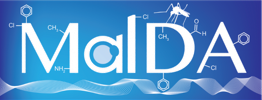Distinct physiological states of Plasmodium falciparum in malaria-infected patients.
Journal:
Nature, Volume: 450, Issue: 7172Abstract:
Infection with the malaria parasite Plasmodium falciparum leads to widely different clinical conditions in children, ranging from mild flu-like symptoms to coma and death. Despite the immense medical implications, the genetic and molecular basis of this diversity remains largely unknown. Studies of in vitro gene expression have found few transcriptional differences between different parasite strains. Here we present a large study of in vivo expression profiles of parasites derived directly from blood samples from infected patients. The in vivo expression profiles define three distinct transcriptional states. The biological basis of these states can be interpreted by comparison with an extensive compendium of expression data in the yeast Saccharomyces cerevisiae. The three states in vivo closely resemble, first, active growth based on glycolytic metabolism, second, a starvation response accompanied by metabolism of alternative carbon sources, and third, an environmental stress response. The glycolytic state is highly similar to the known profile of the ring stage in vitro, but the other states have not been observed in vitro. The results reveal a previously unknown physiological diversity in the in vivo biology of the malaria parasite, in particular evidence for a functional mitochondrion in the asexual-stage parasite, and indicate in vivo and in vitro studies to determine how this variation may affect disease manifestations and treatment.
